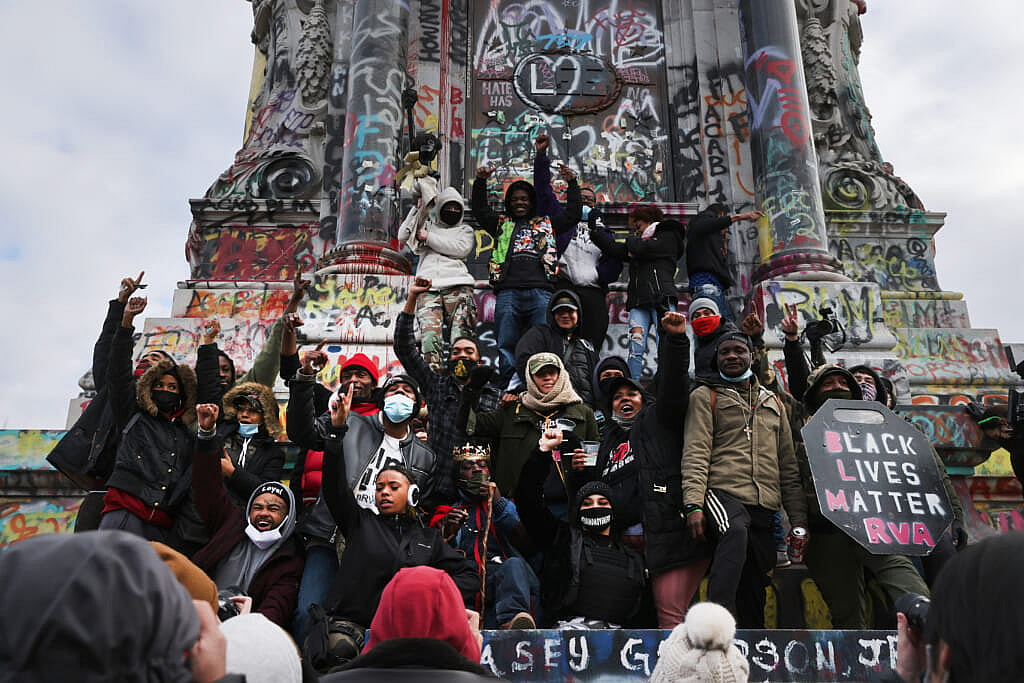One hundred and fifty six years after the end of the Civil War and 131 years after it was dedicated, the Robert E. Lee Monument fell in Richmond, Virginia. The monument was the largest and highest on Richmond’s Monument Avenue featuring mansions and tall trees in the former capital of the confederacy.

But it would never have happened without demonstrations, activism, teargas and weeks of protest following the murder of George Floyd. After much protest in the mostly blue collar community of Richmond, the monument was decorated by activists with political messages and calls to action.
After young and mostly African American protesters led the charge to remove the statue after the George Floyd’s murder by Minneapolis police on May 25, 2020, a renewed debate ignited around the removal of the ultimate symbol of the confederacy: General Robert E. Lee. Protesters in other cities began to topple confederate monuments around the country in “heave-ho” fashion.
In June of 2020, days after the murder of Floyd — that sparked national and international protests — the story of the Lee monument’s removal began as community activists demonstrated around the structure. Many never believed they’d see the day come. Community members always believed the issue was bigger than any statue.
“I knew they said it was going to come down but I didn’t really believe it,” said Paris, 22, of Richmond who was a part of the effort.
“To me it is very important that we understand that we have to look into things deeper — which they don’t expect us to. In our celebration they were hoping that they wouldn’t notice that they removed all the memorials to our lost brothers and sisters,” Princess Blanding told theGrio.

Blanding is the first Black woman in Virginia’s history to be on the ballot this November.
Blanding’s brother, Marcus-David Peters, who was a biology teacher, was killed by a Richmond police officer in 2018 during a mental health crisis. The area around what was the space that occupied the Lee monument was soon dubbed Marcus-David Peters Circle after protests began in the summer of 2020.
“Our fight for the removal of this monument has been a long time coming. It was people power that got this monument down, not our elected officials,” Blanding added.
It wasn’t easy for everyday Richmonders to get a close view of the monument’s historic removal. Several of those activists slept overnight in front of a building accessed through a narrow alleyway leading into a parking lot at 1805 Monument Ave. close to the statue.
They would later set up a barbecue, a table of snacks and a small printed signs shop that produced a “Giddy Up Loser” sign to hand out to onlookers for free.
Several members of Black Lives Matter and others witnessing the statue removal chanted “whose streets, our streets” and sang goodbye to the 21-foot-high statue of Lee as it was lifted from its base minutes at 8:58 a.m. and — unlike so many other statues around the country — in broad morning daylight.
The absence of Lee on Richmond’s landscape was a long time coming. Activists will likely keep the pressure on for more substantive change in a city in need of policy answers on jobs, affordable housing and the cycle of poverty.

Lauren Victoria Burke is an independent journalist and the host of the podcast BURKEFILE. She may be contacted at [email protected] and on Twitter at @LVBurke.
Have you subscribed to theGrio’s “Dear Culture” podcast? Download our newest episodes now!
TheGrio is now on Apple TV, Amazon Fire and Roku. Download theGrio.com today!

